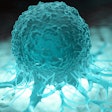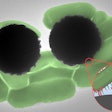
This article kicks off our next technology series. Our focus will cover molecular spectroscopy. If your research uses molecular spec devices, or if you are interested in learning more, be sure to follow along with this series as we uncover different technologies.
 Mettler-Toledo UV5 spectrophotometer.
Mettler-Toledo UV5 spectrophotometer.Molecular spectroscopy is the analysis of molecular species by measuring the interaction of light with a specific sample. The absorption, emission, and/or reflection from a sample of light with wavelengths in the ultraviolet, visible, and/or infrared regions is characteristic of the various molecular vibrations, rotations, and other changes in the energy states of the interacting chemical species, and are unique to different molecular species. Molecular spectroscopy techniques are generally nondestructive and broadly applicable. Ultraviolet/visible (UV/Vis), near-infrared (NIR), and infrared (IR) spectroscopy techniques typically measure the sample’s absorption of the particular portion of the light spectrum they probe. Fluorescence spectroscopy irradiates a sample, but instead of measuring the absorbed energy, it measures the wavelengths and power of the energy that is re-emitted from the sample due to the initial excitation irradiation. Raman spectroscopy measures the spectrum of light scattered from the molecules in a sample. Nuclear MR investigates the absorption of radiofrequency electromagnetic radiation due to interactions with the magnetic properties of the nuclei in the sample. Refractometry, ellipsometry, and color measurement investigate other ways in which samples interact with light.
UV and visible spectrophotometry work by passing beams of light of various wavelengths of the visible and UV spectrum transmitted through a sample, or reflected off a sample, and analyzing the absorption. Visible-only instruments operate in the visible region of the light spectrum, which ranges between about 400 and 800 nanometers. The UV spectrum ranges from around 200 to 400 nanometers. Also included in this post are UV-Vis-NIR spectrophotometers, which analyze from the UV into the near-infrared spectrum.
 Thermo Scientific NanoDrop One.
Thermo Scientific NanoDrop One.Conventional UV/Vis spectrophotometers are configured as either single-beam or dual-beam systems. In single-beam instruments, there is only one light path, which passes through the sample and therefore requires manually switching a reference cuvette with the sample cuvette for calibration. Dual-beam spectrophotometers incorporate a secondary light path and sample holder in which the reference tube is almost simultaneously analyzed with the analysis sample. Split-beam instruments use other methods to divert or split the beam into two paths and are included with dual-beam instruments. Most UV/Vis instruments use sensitive single-channel detectors and scan through the spectrum, but others use diode arrays or other multichannel detectors to simultaneously measure spectra. Visible-only spectrophotometers are grouped together for this report.
Microvolume UV/Vis systems are those that can analyze samples of 5 μL or less. Photometry systems make use of a single wavelength or several selected wavelengths. Often referred to as colorimeters, they are typically dedicated to the detection of only one or a handful of compounds and are commonly sold as the heart of test kits. Lab turbidimeters are also included within the photometers segment.
Keep an eye out for our upcoming posts in the molecular spectroscopy series! We will be covering technologies such as infrared spectroscopy, ellipsometry, and nuclear magnetic resonance.
What molecular spec technologies are part of your work? Which technique do you use most often? Join the discussion below!
Disclosure: LabPulse.com is a sister company of the Science Advisory Board.










